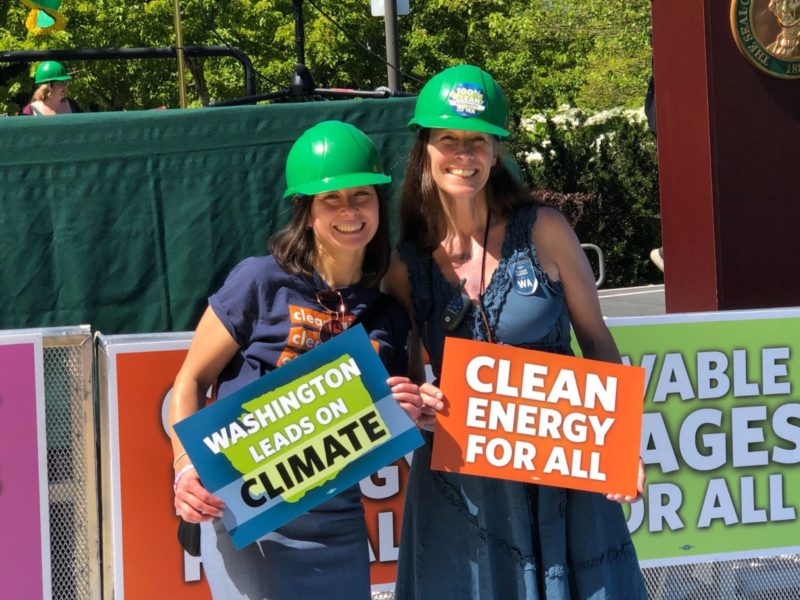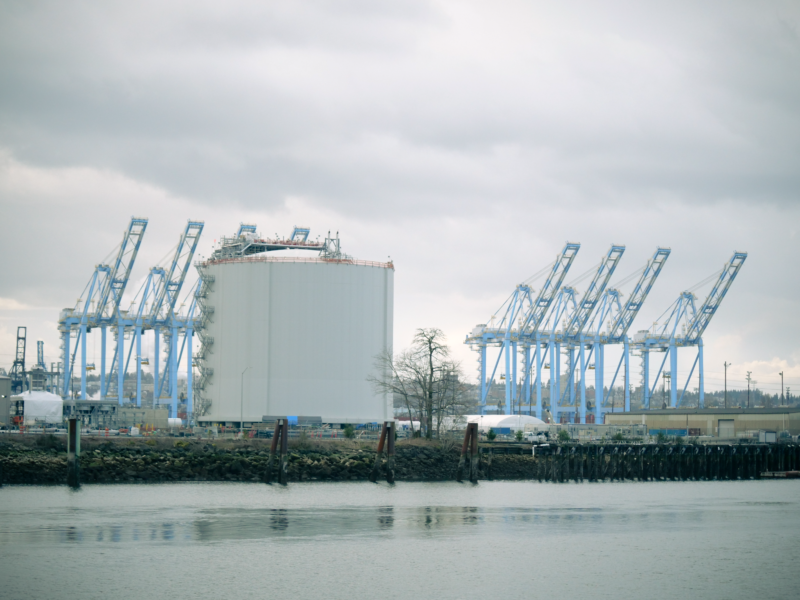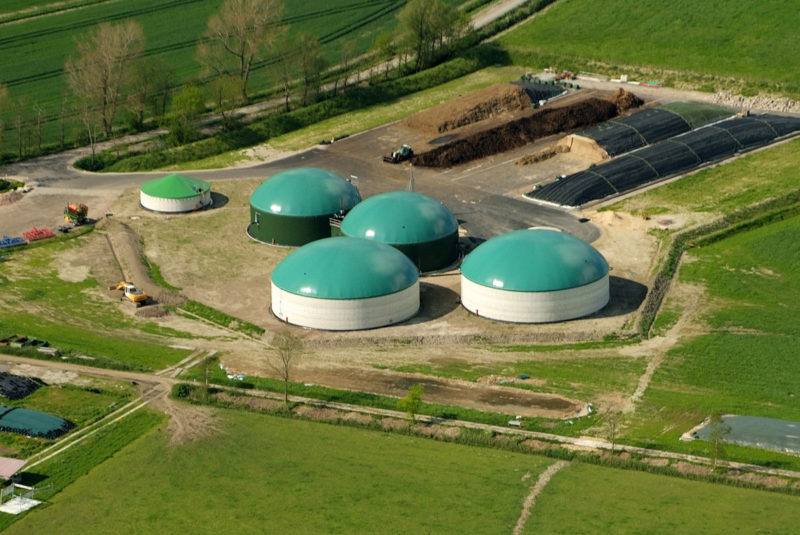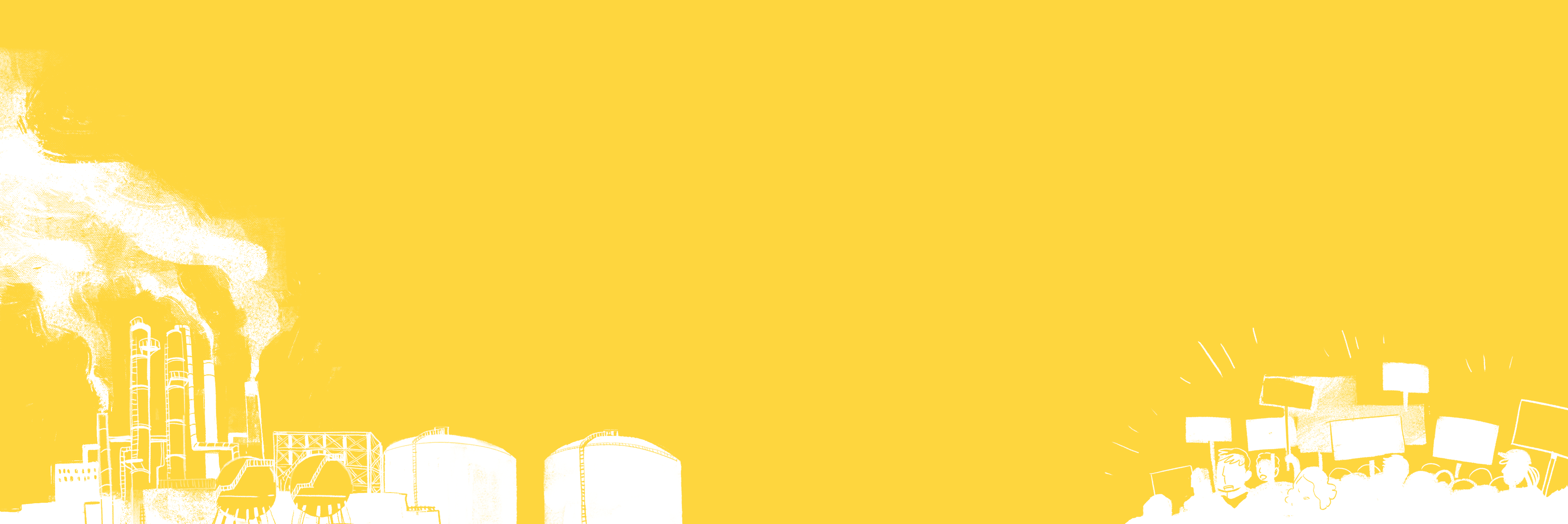At least half of the natural gas in our region comes from fracking
Photo: Peter Aengst (The Wilderness Society)
Transitioning away from fracked gas is key to achieving our climate goals and protecting the health and safety of Washingtonians. In the past, climate advocates looked to gas as a game-changer, believing at the time it was better for our climate. This has proven deeply incorrect. Not only is it dangerous for our climate, it is dangerous to indoor air quality and public health. Fracked gas is primarily made up of methane, a potent greenhouse gas that can have up to 86 times the warming impact of carbon dioxide, often approaching coal in terms of its climate impact.
We are now in the position of pushing back against the gas industry’s effort to grow their foothold in our region and working to retool our built environment away from gas. There are affordable, clean alternatives ready to go right now. There is no reason why our daily lives can’t be powered by safe, clean, affordable and renewable energy, rather than dirty fossil fuels that hurt us now and threaten our future.
Why call it fracked gas?
“Natural gas” is intentional industry branding to greenwash methane gas, which is increasingly extracted through the process of hydraulic fracturing, or “fracking.” Fracking pollutes soil, water, and air with serious health impacts for extraction communities, while the methane gas itself pollutes constantly as it is extracted, transported, and stored. In the Northwest, at least half of the natural gas in our region comes from fracking and that portion is growing. To highlight these impacts, we use the term “fracked gas” because gas is not a clean replacement for oil and goal. It is just another polluting fossil fuel.
Clean Buildings & Healthy Homes
A clean energy transformation includes transitioning off fracked gas across our economy, including the built environment. Buildings are the fastest-growing source of climate pollution in Washington, and recent studies have also exposed just how dangerous gas appliances are for our health. Gas stoves release several hazardous pollutants, including nitrogen dioxide and carbon monoxide, which can cause respiratory effects. Children are especially at risk and are 42% more likely to have asthma if they live in a home with a gas stove, and lower-income households are often also at higher risk of exposure.
To protect our health and climate, we must ensure that new facilities are not plumbed for fracked gas, that building retrofits include ways to transition off gas appliances, and that our policies remove preferences for gas. The State’s 2021 Energy Strategy, which lays out a robust, equitable set of policies and actions for achieving our state’s greenhouse gas emission targets, points to the urgent need to decarbonize our buildings stock. Achieving this outcome requires a multi-faceted approach, utilizing all our tools from investing in weatherizing our homes, to updating our building codes, to making deep energy efficiency investments, to accessing clean and affordable alternatives to gas.

100% Clean Electricity
Washington must continue to lead in planning and responding to the risks and consequences of climate change. The Clean Energy Transformation Act, passed in 2019 by the Washington State Legislature, requires electric utilities serving customers in Washington to achieve greenhouse gas neutral electricity by 2030 and 100% renewable or clean energy by 2045 by investing in workers and building a more equitable energy system. Each electricity utility is now required to plan for, and ensure the achievement of, this law. This includes transitioning our current mix of gas-fired power plants to renewable, clean energy generating systems, fulfilling energy and capacity demands created by more electricity use across our economy, increasing resiliency, requiring deep energy efficiency practices, and doing this work in a way that creates more equitable and livable communities.

Fracked Gas & Petrochemical Terminals
Alongside their efforts to slow the transition off fracked gas in buildings, the gas industry has also targeted the Northwest for major new gas and petrochemical infrastructure that would be massively polluting and increase our gas dependence for decades to come.
Projects like Puget Sound Energy’s Liquefied Natural Gas (LNG) refinery in Tacoma and the proposed fracked gas-to-methanol facility in Kalama, Washington have been greenwashed and sold as “clean energy” while attempting to lock in new fossil fuel infrastructure that would endanger local communities and hinder the transition to truly clean energy sources.
In partnership with the Power Past Fracked Gas coalition, Washington Environmental Council and communities across the Northwest are fighting back against these dangerous projects and working to secure permanent land use protections against new fossil fuel facilities in these hotspot communities.

Renewable Natural Gas
As the gas industry sees the rising tide of opposition to dirty fracked gas, they have begun touting the potential benefits of “renewable natural gas”—methane captured at landfills, large mega-dairies, and other methane-generating facilities—to address climate change. As with fracked gas, methane is the primary component of renewable gas and poses many of the same health, safety, and climate risks.
Although renewable natural gas (RNG) may have promise in some localized small-scale operations and heavy manufacturing industries that don’t yet have electric technologies available, RNG will likely only make up a very small portion of the region’s gas supply, and will not displace the dirty fracked gas that will be the majority of the supply. For this reason, state and local governments must continue to focus on transitioning our electricity and building sectors off of gas, and prevent new gas terminals that will greatly increase our region’s overall gas demand.
Learning lessons from our past is key to enabling Washington transition off gas and towards cleaner energy sources. We cannot repeat the mistakes of the past in disregarding the details of emerging technologies promoted under the guise of clean energy and must account for their full impacts on health, safety, and the climate.


